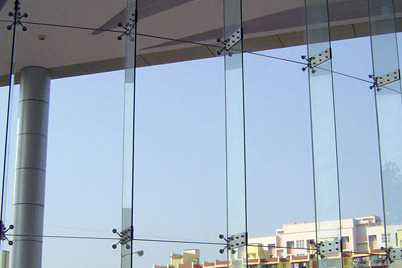Spider fittings are hardware components used in modern architecture to support glass panels and create frameless glass facades, partitions, canopies, and balustrades. Often made from high-grade stainless steel, these fittings are known for their strength, durability, and sleek, minimalist look, which is ideal for contemporary designs. Spider fittings are frequently used in commercial buildings, offices, malls, and high-end residences to maintain an open, airy feel while ensuring structural stability.

Key Features of Spider Fittings:
Aesthetic Appeal: Spider fittings are designed to enhance architectural aesthetics by supporting large glass panels without heavy framing, resulting in a seamless, floating glass effect.Flexibility and Versatility: These fittings come in various types, such as two-arm, three-arm, and four-arm models, making them adaptable to different structural needs and design requirements.
Strength and Durability: Made from stainless steel or other high-strength materials, spider fittings can withstand significant loads and resist corrosion, making them suitable for both indoor and outdoor use.
Safety and Security: High-quality spider fittings are designed to hold large glass panels securely, ensuring both stability and safety in high-traffic areas or buildings exposed to wind loads and other environmental pressures.
Types of Spider Fittings:
Point-Fixed Fittings: Used to anchor glass panels at specific points, often with bolt fittings that secure the glass in place without visible frames.
Two-Arm, Three-Arm, and Four-Arm Spider Fittings: The number of arms determines how many glass panels can be anchored to a single fitting. Two-arm fittings are often used for vertical glass walls, while four-arm fittings are common for corner or multi-panel setups.
Routels: These are the bolts or spigot-type connectors that hold the glass in place within the spider fitting arms. They’re typically paired with spider fittings for added stability.
